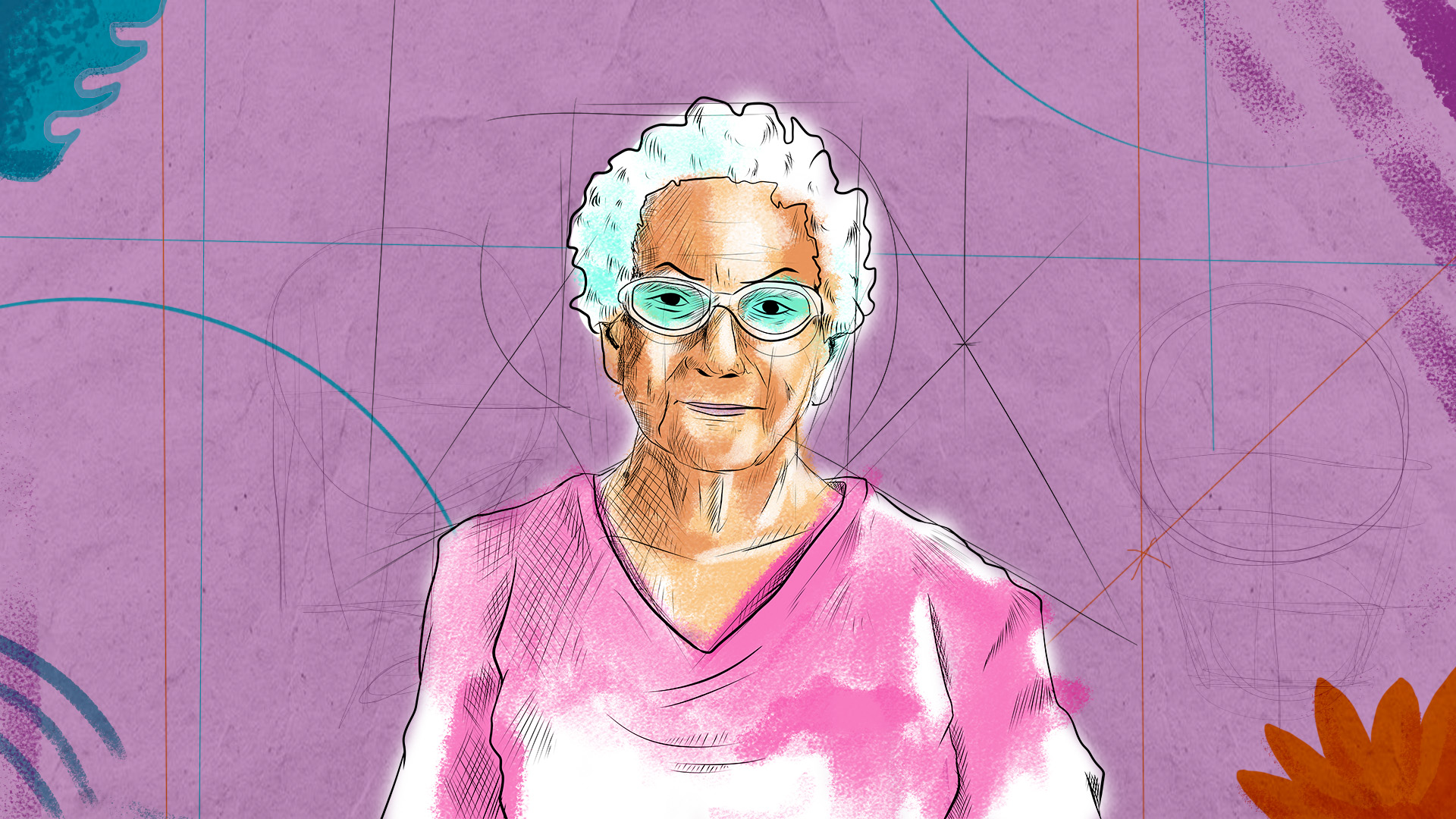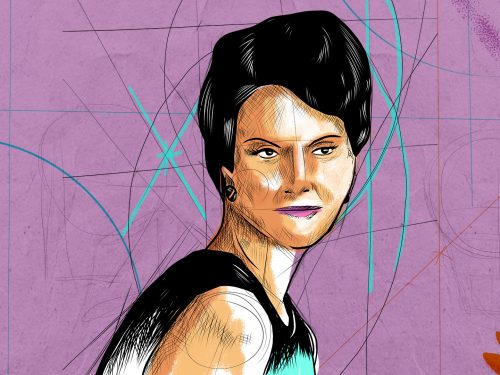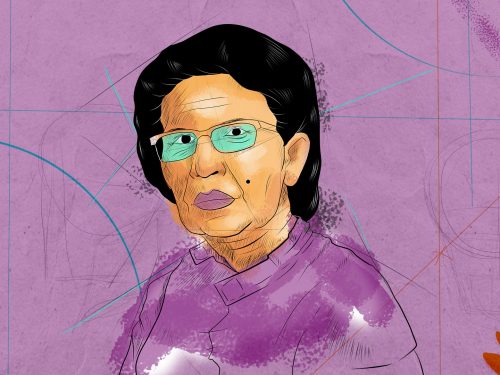
Lia looked for her bottle of cognac to take a drink before the presentation. That’s what she did in situations that were too stressful to avoid having her blood pressure drop. It was July 13, 1957 and the 25th of July Folkloric Cultural Ensemble, which she had founded just a year before, was debuting at the National Theater of Costa Rica.
For many members of the dance group, it was their first trip to San Jose. That’s why it was too late when Lia found her bottle. The dancers, nervous about the packed theater that awaited them, reduced her cognac to almost nothing.
Even so, without her cognac, she remained stable and pushed on with the ironlike character that she used to defend her projects and the province. Forming this dance group was her dream for 15 years, so the show had to go on.
The Weaver of Culture
Lia Bonilla was born in Santa Cruz on November 21, 1920. She was the daughter of Cleto Bonilla, a lawyer and legislator for Guanacaste during Cleto Gonzalez Flores’ two terms in office, and Simona Chavarria, “a Creole beauty who drove Cleto crazy,” Lia related.
She took her first dance steps supported on the feet of her brothers when she was just two years old. Those moments set the tone for her passion for dance.
After her mother died, when Lia was five years old, her family decided to send her to live in Liberia with her older sister, Clarisa. She finished her studies there, graduated as a teacher and then began to work at the Ascension Esquivel school in Liberia in the kindergarten and then at the Mixed School in Filadelfia.
In these communities, she met her two great teachers: Isolina Centeno and Rita Carmona, a couple of Guanacastecans who danced in the streets of Sardinal and Santa Cruz. Their dances triggered in Lia a compulsion to document the indigenous, popular and folk dances of Guanacaste.
From them, she learned “La botijuela” and “El zapateado,” colonial ballroom dances that, according to Lia’s later research, had their origins in the dances of European aristocracies.
In her writings, she described in detail the traditions of the dance of la yegüita in Nicoya and the dance of the Promethean Indians in Santa Cruz. She also documented the dresses that were worn in each tradition.
She paid special attention to the clothes worn daily by fishermen, sabaneros (cowboys), laborers and vendors, and then made the costumes that she used in her choreography.
Lia and Her Character
Only a year before the performance at the National Theater, she appeared for the first time with the 25th of July Folkloric Cultural Ensemble at the Mayorga Theater in the Condega neighborhood in Liberia, which belonged to her sister, Clarisa, and Clarisa’s husband.
The venue had folding wooden seats with a sloping floor so that everyone could comfortably watch the movies or presentations.
In this place, she tried her first choreographies accompanied by musicians like her brother, Jesus Bonilla, author of Liberian Moon, and also Sacramento Villegas, with whom she also wrote the song “Me lo dijo el río” (The River Told Me).
In this small theater, she also began her task of convincing the province and the country that Guanacaste had a unique and very valuable cultural identity.
But the road was full of small and big fires to put out. From time to time, she would have to figure out how to repair shoes for one member or look for a long-sleeved white shirt for another. On other occasions, she had to advance payment to the marimba players with dependent families and make sure they arrived at the performances on time and sober.
She knew how to handle the pressure created by putting on the dances, the choreographies, organizing the trips, but the lack of state and economic support made her lose her filters.
The firmness with which she demanded better opportunities for the province and its culture brought her friendships such as that of Rafael Angel Calderon Guardia, who offered her a nomination as a legislative candidate for the province. Lia rejected the offer and gave up her space.
She often used her pseudonym— Nayudel de Burgos—- to sign her stories and her opinion articles in support and defense of the political interests of Guanacaste.
And in the midst of that stubbornness, her sister, Clarisa, reproached her for her temperament, telling her, “Lia, that character!” That confrontational and direct personality also provoked rejection from people who didn’t share her vision.
Lia was able to carry out many of her projects. One of the ones she saw as unfinished was the “Museum of Costa Rican dress, with an emphasis on Guanacastecan clothing.”
She always complained about the unequal relationship between how much Guanacaste gave to the country and how little it received. “Nobody gave us anything, but we were the generous gift givers; we were the ones who gave,” she said.
More than demanding, Lia Bonilla was a doer. That’s why, wherever there is a folkloric dance group, there is a seed from her.
That’s how Melida Obando sees it. She was one of her students in the 25th of July group, who was there on that day in 1957 at the National Theater. She remembers that, at the end of the presentation, once the cognac and the nerves had passed, the entire audience at the theater applauded them with a standing ovation.
Lia directed the 25th of July Folkloric Cultural Ensemble for 25 years and received the National Award for Popular Culture in 2005.
“This award isn’t mine. Rather, it belongs to those in the past who built Guanacastecan dance. It’s a recognition that isn’t for me, but for the talent of a town that didn’t have elementary schools, much less universities, but that produced a rich and varied folklore,” she said when she received the award.
Lia Bonilla died in 2016 at the age of 94.
This profile of Lia Bonilla was put together based on the book “Lia Bonilla, Walker from Guanacaste” and an interview with Melida Obando, former member of the 25th of July group and co-author of the book.







Comments